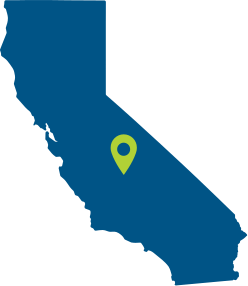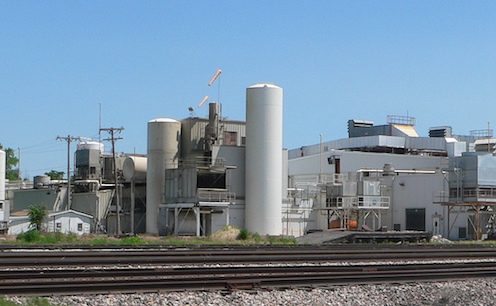Central Valley Region


Decarbonization requires a larger workforce, higher technology integration skills
More than 15,000 annual job openings indicate unmet potential in the Central Valley’s advanced energy economy. Environmental and Equity progress requires advances in workforce development to decarbonize communities and create economic mobility for their residents. Significant educational and workforce development gaps must be overcome to drive decarbonization in the region.
Our Process:
Three-Part Data Analysis
TESC cultivates regional collaboratives that prioritize workforce initiatives to drive the triple bottom line of Economy, Environment, and Equity
Economy
Throughout its history, the San Joaquin Valley — the vast middle of California, home to 4.3 million residents and the greatest agricultural bounty on earth — has defied quick or easy fixes. In good times and bad, it has trailed the rest of California on practically every socioeconomic measure the experts can quantify: unemployment, poverty, educational achievement, health. In July 2019, six of the ten highest metropolitan unemployment rates in the country were found in the Valley, according to the federal Bureau of Labor Statistics. The bureau’s records cover 389 metropolitan areas.
“When people refer to us as the ‘Appalachia of the West,’ the ‘Valley of the poor,’ it takes its toll,” said Benjamin Duran, who leads the Central Valley Higher Education Consortium, a nonprofit aimed at improving the region’s workforce skills through education. “For years, for decades, it’s suffered from low self-esteem.”
The high-speed rail project so far has been less of an economic catalyst than a symbol of how difficult it is to bring change to the Valley.
Although it’s created thousands of construction jobs, the project is plagued with significant cost overruns and delays. It will be years before the initial segment, linking Merced with Bakersfield, is completed. What’s more, Newsom expressed doubt about whether the rail line will ever extend beyond the Valley and connect with the Bay Area and Southern California. That statement helped spark a funding dispute with the Trump administration, putting billions of federal dollars for the project at risk.
The suggestion that the rail line might be cut short didn’t go over well in the Valley, where high-speed rail was already viewed by many as an out-of-control boondoggle that devours farmland but will deliver few tangible benefits. Now even some of its supporters in the business community are beginning to have doubts about the project’s viability.
Source: Sacramento Bee, September 26, 2019 https://www.sacbee.com/news/california/big-valley/article233551287.html
Environment
The Valley suffers on multiple levels. Its pollution is so bad, it has its own page on the U.S. Environmental Protection Agency’s website, which says the region has “some of the nation’s worst air quality, high rates of childhood asthma, and contaminated drinking water.”
The San Joaquin Valley has some of the nation’s worst air quality, failing to meet federal health standards for both ozone (smog) and particulate pollution. This is a result of the valley’s topography – surrounding mountain ranges trap air pollutants — and pollution sources, including heavy truck traffic on I-5 and Highway 99; diesel-burning locomotives, tractors and irrigation pumps; and wood-burning stoves and fireplaces.
Technological advances in engines, emission controls and clean energy hold great promise for reducing air pollution and creating jobs in the valley. EPA provides funds to support research and development. EPA also funds medical research on the health effects of pollutants and factors that make certain populations, such as children and the elderly, more vulnerable.
Thousands of Valley residents drink water tainted with arsenic, nitrates and other dangerous chemicals. The Legislature in July enacted SB 200 to dedicate $130 million a year on cleaning up contaminated water systems.
Source: https://www.epa.gov/sanjoaquinvalley/epa-activities-cleaner-air
Equity
Key Findings from The San Joaquin Valley Public Health Consortium
- The San Joaquin Valley (SJV) faces higher levels of adverse birth outcomes than other parts of California. During the study period, the proportion of preterm births was greater within the SJV region, 9.4%, than the state, 8.8%.
- Rates of both teen birthing and adverse birth outcomes were higher for low income women of color living in neighborhoods with fewer economic opportunities and higher pollution.
- Children in the SJV have higher rates of preventable hospitalizations than other California children do, and there are broad disparities in these events by individual- and neighborhood-level factors.
- If children of color in the SJV had similar preventable hospitalization rates as their white peers in affluent neighborhoods, there would be a 62% reduction in these events, a possible costs savings of $19,113,621.
- SJV residents are more likely to die before age 65 and lose more years of life after age 65 than other Californians.
- Elders in the SJV have higher use of avoidable hospitalizations and lower use of planned elective surgeries than do their peers in the rest of California
Source: http://www.fresnostate.edu/chhs/cvhpi/programs/sjvphcreportseries/index.html
Oops! We could not locate your form.